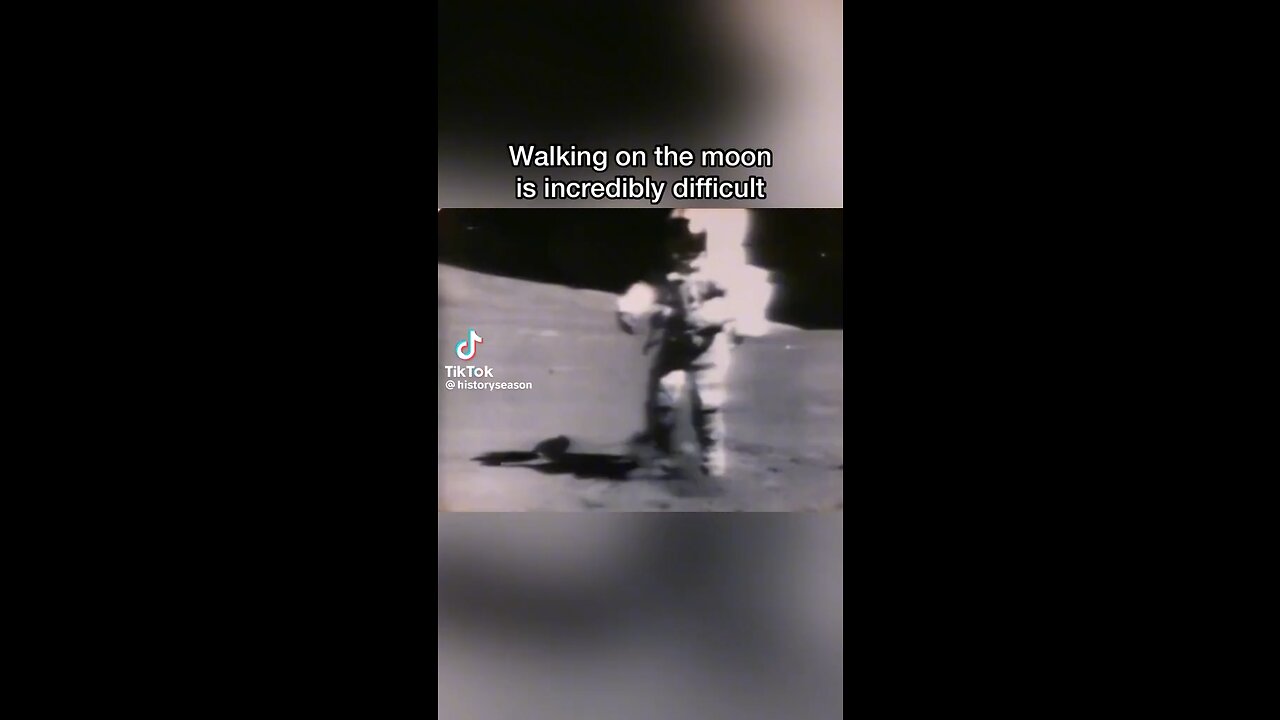Premium Only Content

Lunar gravity and human walk on moon
The footage has provided important data to detailed NASA reports on lunar gravity and how humans move around in this environment. Information that will prove important when NASA returns to the moon in the not so distant future.
Lunar gravity refers to the force of gravity on the moon. Compared to Earth, the moon's gravity is much weaker, approximately one-sixth of Earth's gravity. This means that objects and people on the moon weigh much less than they do on Earth.
The reason for this difference in gravity is due to the moon's smaller mass. Since gravity is directly proportional to mass, the moon's smaller size results in weaker gravitational pull. As a result, when astronauts walk on the moon, they experience a different sensation than they do on Earth.
When humans walk on the moon, they have to adjust their movements to the lower gravity. They find themselves able to take much larger strides and leap much higher than they can on Earth. This is because the weaker gravity allows them to exert less force to overcome their own weight.
To compensate for the reduced gravity, astronauts on the moon often use a hopping or bounding motion. They push off the lunar surface with their legs and can travel significant distances with each leap. This bouncing gait helps them conserve energy and move efficiently in the low-gravity environment.
Additionally, the lunar surface itself plays a role in how humans walk on the moon. The moon's surface is covered in a layer of fine, powdery dust called regolith. This regolith can be several meters deep in some areas. When astronauts walk on the moon, their footprints leave deep impressions in the regolith due to the lack of atmospheric pressure and wind erosion.
The unique combination of lower gravity and the soft, dusty surface allows astronauts to leave distinctive footprints on the moon. These footprints can remain preserved for a long time since there is no erosion or weathering to wash them away.
Walking on the moon also requires astronauts to wear specialized spacesuits. These suits provide them with protection from the vacuum of space, extreme temperatures, and micrometeoroids. The suits also have built-in boots with specially designed soles to provide traction on the lunar surface.
In summary, lunar gravity is about one-sixth of Earth's gravity, allowing astronauts to take larger strides and leap higher on the moon. They adjust their movements to the lower gravity by using a hopping or bounding motion. The moon's regolith-covered surface preserves their footprints, and specialized spacesuits are worn for protection and traction.
I hope this detailed explanation helps you understand how humans walk on the moon!
#history #space #moon #nasa #apollo
-
 LIVE
LIVE
vivafrei
9 hours agoEp. 267: L.A. Burns AGAIN! Patel on Rogan! Elon's Meltdown! 2nd Amendment Win! SCOTUS & MORE!
15,530 watching -
 LIVE
LIVE
Sarah Westall
1 hour agoDeep State Operations, Brain Orgonites, Infowars in the Early Years w/ Jason Burmas
699 watching -
 LIVE
LIVE
TheSaltyCracker
1 hour agoUnleash Rooftop Koreans ReeEEeeStream 06-08-25
15,406 watching -
 LIVE
LIVE
IsaiahLCarter
3 hours agoAPOSTATE RADIO 017: Ranking Marxist Pluralities, with Seneca Scott
530 watching -
 LIVE
LIVE
Nerdrotic
2 hours ago $1.27 earnedMalaysian Flight MH370 and Zero Point Free Energy with Ashton Forbes | Forbidden Frontier #104
966 watching -
 4:19:57
4:19:57
Barry Cunningham
10 hours agoDO YOU KNOW WHAT IS HAPPENING IN CALIFORNIA MEANS TO THE REST OF AMERICA?
55.3K123 -
 LIVE
LIVE
EricJohnPizzaArtist
6 days agoAwesome Sauce PIZZA ART LIVE Ep. #50: Movie Night with JAWS!
87 watching -
 32:50
32:50
Stephen Gardner
2 hours ago🔥Elon Musk CAN'T UNDO this MISTAKE with Trump!
11.6K36 -
 LIVE
LIVE
SpartakusLIVE
2 hours agoSpecialist EASTER EGG at the Tower of Power || Duos w/ @sophiesnazz, Quads Later?!
163 watching -
 LIVE
LIVE
Anthony Rogers
2 hours agoTop 10 Takedowns on Fortnite
155 watching